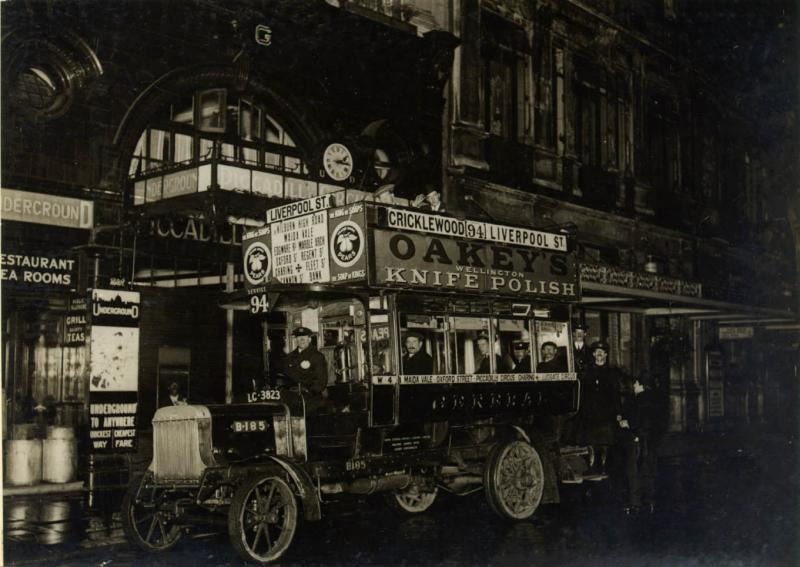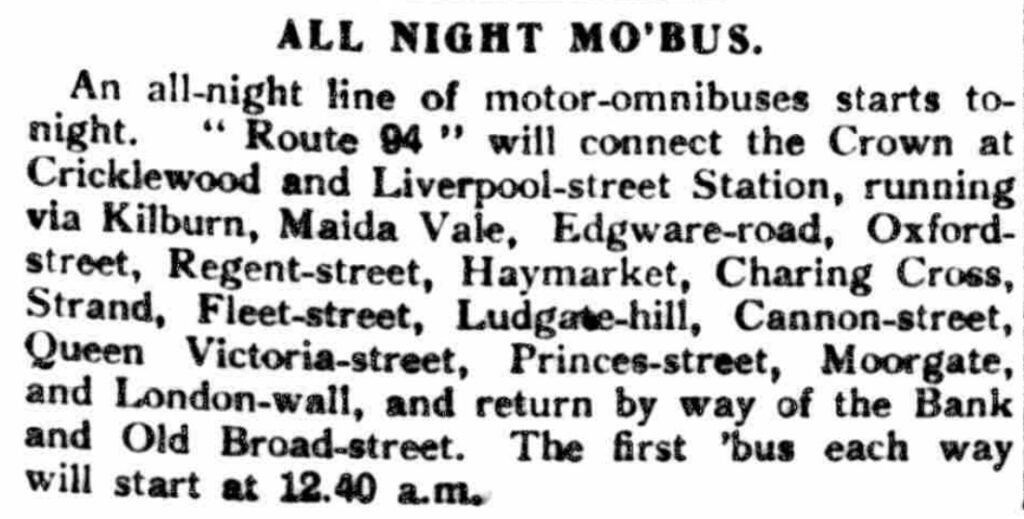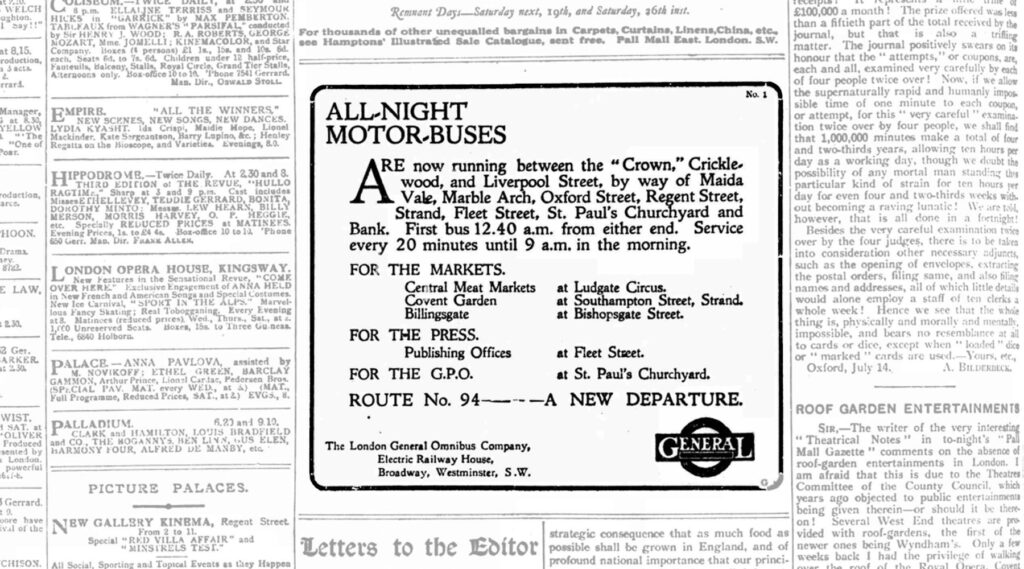This month marks the 110th anniversary of London’s first Night Bus, when a new service was introduced between Cricklewood and Liverpool Street Station on Monday 14th July 1913.

First Night Bus service, B-Type (B185) on route 94 outside Piccadilly Circus Underground station. Leslie Green station canopy clock gives time at 2.15am. (c) TfL from the London Transport Museum collection
The very first Night Bus left Liverpool Street station at 12:40am carrying 24 passengers — which is quite busy as the bus could only carry 34 passengers — and according to reports at the time, those first passengers included workers getting out the morning’s newspapers, postmen, musicians, waiters, servants, those who needed to get to the markets early, and even “casual people of all kinds and on sundry errands wanting to travel”
Doubtless one or two were being coy about wanting to be on the first Night Bus, simply to say they were there when it happened.
It’s not that there weren’t overnight services in London already, with some tram and railway routes operating throughout the night, but Route 94 was chosen for the Night Bus as it slotted into a part of London not being served by trams or trains.
One of the reasons why the bus company hadn’t run overnight until then was quite simple – the buses didn’t have headlamps until 1913, having only just added electric interior lights the year before.
“If as we expect, the experiment is successful”, an official of the London Omnibus Company told the Daily Citizen, “we shall, of course, consider the establishment of other all-night services in parts of Greater London which seem to need them. We shall not, however, in any way compete with the all-night services run by the trams, or with the railway companies that cater for night workers. There are a number of places which need night services, such as Shepherds Bush, Forest Hill, and possibly Hornsey. These may presently be serve by motor-bus”
The Daily Mirror reported the following day that the bus carried more people heading home between 1am and 4am, mainly journalists, newspaper printers and theatre workers, but early morning commuters started heading into London from about 4am onwards.
In that sense, the original Night Bus was little different from the modern ones, albeit the job titles will have changed a bit.
The first ever Night Bus service ran between the Crown pub in Cricklewood to Liverpool Street Station, through Kilburn, Maida Vale, Oxford Street, Haymarket, Trafalgar Square, Strand, Fleet Street, Moorgate, London Wall and Bank, stopping near to the central meat markets and all the newspaper offices.
The first bus in each direction left at 12:40am (when the regular day service ended) and subsequent buses ran at 20 minute intervals until the regular started again the next day at 9am. They had a fleet of six buses to provide the overnight service.
According to Train Omnibus Tram (T.O.T), a staff magazine, Route 94 was introduced as an experiment and it was hoped that it would become popular with Londoners and would further develop services in other parts of London.
Now, 110 years later, there are over a hundred Night Bus routes in London.
Tom Cunnington, Head of Buses Business Development said: “The Night Bus continues to be a much-needed service to keep London moving with the purpose remaining the same after all these years. 110 years later, and with hundreds of night bus services across the whole of London, it proves just how popular the Night Bus is taking Londoners from A to Z.”









Shows how empty the roads must have been at night,that just 6 buses were needed for a 20 minute frequency back then. Even more suprising given the service ran until 09.00.